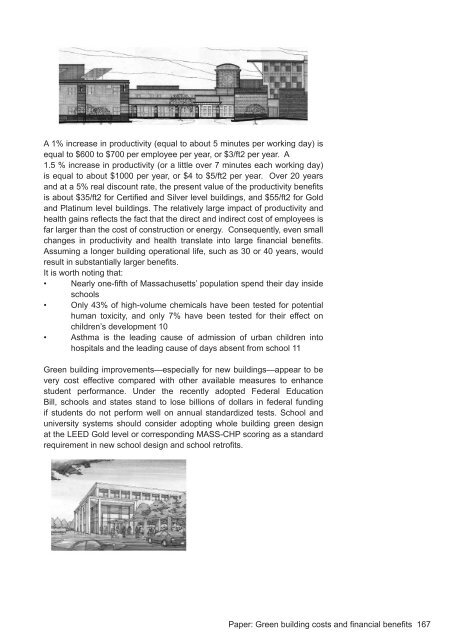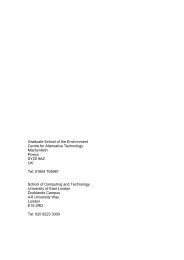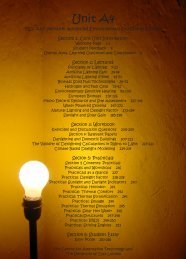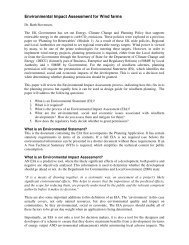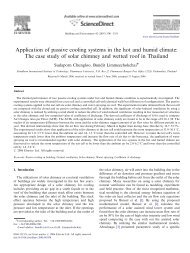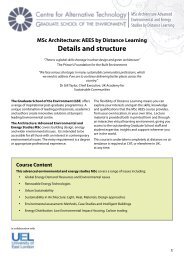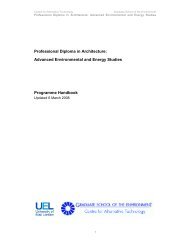Module B1 Study Book - the Graduate School of the Environment
Module B1 Study Book - the Graduate School of the Environment
Module B1 Study Book - the Graduate School of the Environment
Create successful ePaper yourself
Turn your PDF publications into a flip-book with our unique Google optimized e-Paper software.
A 1% increase in productivity (equal to about 5 minutes per working day) is<br />
equal to $600 to $700 per employee per year, or $3/ft2 per year. A<br />
1.5 % increase in productivity (or a little over 7 minutes each working day)<br />
is equal to about $1000 per year, or $4 to $5/ft2 per year. Over 20 years<br />
and at a 5% real discount rate, <strong>the</strong> present value <strong>of</strong> <strong>the</strong> productivity benefits<br />
is about $35/ft2 for Certified and Silver level buildings, and $55/ft2 for Gold<br />
and Platinum level buildings. The relatively large impact <strong>of</strong> productivity and<br />
health gains reflects <strong>the</strong> fact that <strong>the</strong> direct and indirect cost <strong>of</strong> employees is<br />
far larger than <strong>the</strong> cost <strong>of</strong> construction or energy. Consequently, even small<br />
changes in productivity and health translate into large financial benefits.<br />
Assuming a longer building operational life, such as 30 or 40 years, would<br />
result in substantially larger benefits.<br />
It is worth noting that:<br />
• Nearly one-fifth <strong>of</strong> Massachusetts’ population spend <strong>the</strong>ir day inside<br />
schools<br />
• Only 43% <strong>of</strong> high-volume chemicals have been tested for potential<br />
human toxicity, and only 7% have been tested for <strong>the</strong>ir effect on<br />
children’s development 10<br />
• Asthma is <strong>the</strong> leading cause <strong>of</strong> admission <strong>of</strong> urban children into<br />
hospitals and <strong>the</strong> leading cause <strong>of</strong> days absent from school 11<br />
Green building improvements—especially for new buildings—appear to be<br />
very cost effective compared with o<strong>the</strong>r available measures to enhance<br />
student performance. Under <strong>the</strong> recently adopted Federal Education<br />
Bill, schools and states stand to lose billions <strong>of</strong> dollars in federal funding<br />
if students do not perform well on annual standardized tests. <strong>School</strong> and<br />
university systems should consider adopting whole building green design<br />
at <strong>the</strong> LEED Gold level or corresponding MASS-CHP scoring as a standard<br />
requirement in new school design and school retr<strong>of</strong>its.<br />
Paper: Green building costs and financial benefits 167


